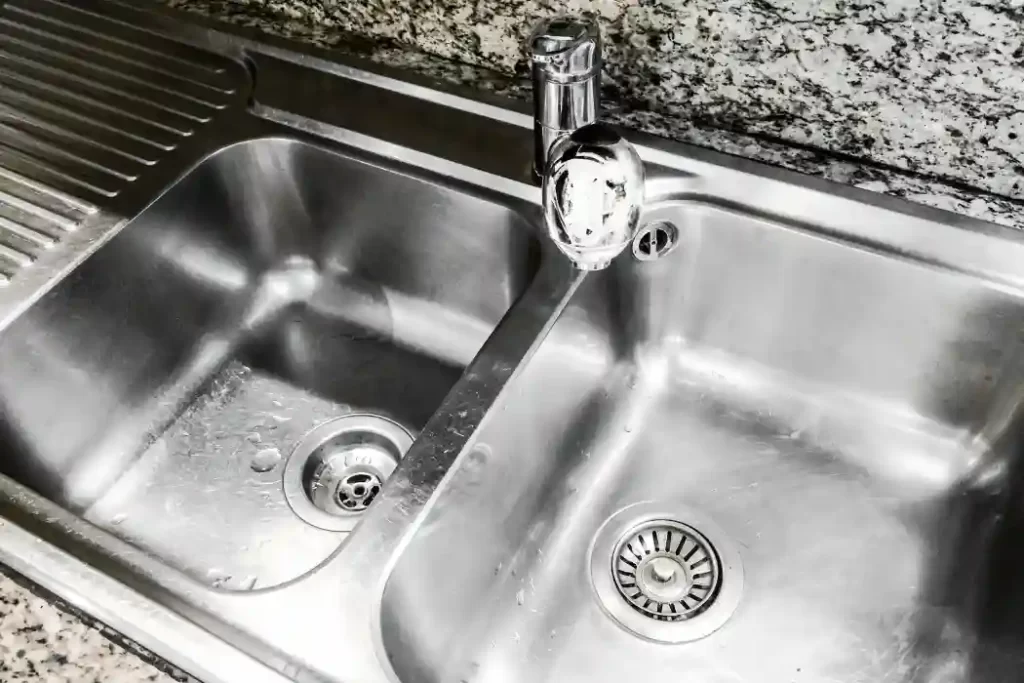In the world of kitchen design, a drainboard sink offers a unique and practical solution that can revolutionize your kitchen space. Combining functionality with style, a drainboard sink features an integrated drying area right beside the main sink, allowing you to conveniently air dry dishes, utensils, and produce. With its sleek and modern design, a drainboard sink not only optimizes your kitchen workflow but also adds a touch of elegance and efficiency. In this article, we will explore the benefits of a drainboard sink, its design options, and how it can transform your kitchen into a stylish and organized culinary haven.
A drainboard sink offers a clever and functional solution for busy kitchens. With its built-in drying area, it eliminates the need for a separate dish rack or towel drying, streamlining your kitchen workflow and keeping your countertop clutter-free. The combination of style and practicality makes a drainboard sink an ideal choice for anyone looking to enhance their kitchen’s efficiency and aesthetics. Enhance your home renovation with a classic and functional touch by installing a drainboard sink, combining style and practicality in your kitchen space.

The Benefits of a Drainboard Sink
Incorporating a drainboard sink into your kitchen space provides several benefits:
Efficient Workflow: The integrated drainboard next to the main sink allows for easy washing, rinsing, and drying in one central location. It saves you time and effort by eliminating the need to move wet dishes to a separate drying area.
Enhanced Organization: The dedicated drying area of a drainboard sink helps keep your kitchen organized. It provides a designated space for dishes, utensils, and produce to air dry, reducing clutter on your countertops.
Space-Saving Solution: By eliminating the need for a separate dish rack, a drainboard sink optimizes your kitchen space. It frees up valuable countertop real estate, allowing for better utilization and a more streamlined kitchen design.
Clean and Hygienic: The sloped design of the drainboard allows water to drain directly into the sink, preventing puddles and stagnant water. This promotes cleanliness and helps prevent the growth of bacteria or mildew.
Versatile Usage: A drainboard sink is not just for drying dishes. It can also serve as a convenient workspace for prepping fruits and vegetables or as a temporary resting place for hot pans and pots.
Design Options for Drainboard Sinks
Drainboard sinks come in a variety of designs and materials to suit different kitchen styles and preferences. Here are some popular options:
Stainless Steel: Stainless steel drainboard sinks offer a sleek and contemporary look. They are durable, resistant to stains and scratches, and easy to clean. Stainless steel sinks also blend well with various kitchen decor styles.
Porcelain or Ceramic: Porcelain or ceramic drainboard sinks exude a classic and timeless charm. They are available in a range of colors and finishes, allowing you to create a focal point in your kitchen while maintaining a vintage aesthetic.
Composite Materials: Composite drainboard sinks combine the durability of materials like quartz, granite, or acrylic with the functionality of an integrated drainboard. These sinks offer a range of colors, textures, and styles to complement modern kitchen designs.
Farmhouse Style: Farmhouse or apron-front drainboard sinks feature a deep basin with a front-facing apron. They are known for their rustic and charming appeal, making them a popular choice for farmhouse or country-inspired kitchens.
Maximizing Efficiency with a Drainboard Sink
To make the most of your drainboard sink and maximize efficiency in your kitchen, consider the following tips:
Organize Your Drying Area: Arrange dishes, utensils, and produce on the drainboard in an organized manner to optimize drying space. Use dish racks or utensil holders to keep items upright and allow proper airflow.
Rotate Items: To ensure even drying, rotate items on the drainboard periodically. This helps promote airflow and prevents moisture buildup.
Wipe Down the Drainboard: After washing and drying dishes, wipe down the drainboard with a clean cloth to remove any remaining moisture. This prevents water spots and keeps the sink area clean and dry.
Utilize the Sink Space: Take advantage of the ample space in the main sink for washing larger items or soaking pans. The drainboard can be used to temporarily hold smaller items or utensils while you work.
Maintenance and Care
Proper maintenance and care will help keep your drainboard sink in excellent condition. Here are some general guidelines:
Regular Cleaning: Clean your drainboard sink regularly using mild dish soap and warm water. Avoid abrasive cleaners or scrub brushes that may scratch the surface.
Prevent Stains: Immediately wipe away any food or beverage spills to prevent staining on the sink surface. For stubborn stains, use a non-abrasive cleaner recommended for the specific material of your sink.
Avoid Excessive Weight: Be mindful of the weight placed on the drainboard to prevent any potential damage. Avoid placing heavy objects or sharp utensils directly on the drainboard surface.
Check for Leaks: Periodically check for any signs of leaks around the drainboard area. If you notice any water accumulation or dripping, have it repaired promptly to avoid water damage.
Conclusion
A drainboard sink combines style and functionality, offering a practical solution to enhance your kitchen’s workflow and organization. With its integrated drying area, a drainboard sink optimizes space, promotes efficiency, and adds a touch of elegance to your culinary haven. Whether you’re renovating your kitchen or looking to upgrade your sink, consider the benefits of a drainboard sink and how it can transform your kitchen into a stylish and organized space.

